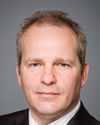Thank you very much.
The slide deck was actually presented on Tuesday by my colleagues. We have it today by way of background. I thought I would say a few words so that we don't start just by asking for your comments and questions. I will introduce my colleagues and say a couple of words to follow up from that slide deck. But we can certainly work from it today. We' be happy to do that.
I do want to say thank you very much for the invitation to be here today to further discuss the topic of closed containment. My name is Kevin Stringer. I'm the assistant deputy minister for program policy at the Department of Fisheries and Oceans. I have general responsibility for operational policy for the department's major programs, including aquaculture.
I have with me three colleagues. Dr. Jay Parsons is director of the aquaculture science branch within the ecosystems and oceans science sector in the department. He is also the immediate past president of the World Aquaculture Society.
Mr. Stephen Stephen is director of the biotechnology and aquatic animal health science branch within the same science sector at DFO.
As well, Mr. Alistair Struthers is the team leader for sector strategies within our aquaculture management directorate. He's one of three authors of the feasibility study on closed containment.
I gather from my colleagues that you had a useful and informative introductory session on Tuesday. I am told that you asked some interesting questions, and hopefully you were able to gain a greater understanding of closed containment, DFO's involvement thus far, and an insight into the challenges of potentially applying these technologies.
As you know--just for a bit of context--aquaculture is important in Canada. It generates a landed value now of $400 million and nearly 6,000 jobs in British Columbia, and another $350 million and nearly 5,000 jobs on the east coast. There are important developments in central and inland Canada as well.
In total, aquaculture has an economic impact of $2.1 billion for the Canadian economy. We're committed to ensure that this growing industry is managed and regulated in an environmentally responsible way.
DFO recognizes the importance of continuous innovation that can provide further improvements to current practices, sustainability, economics and social acceptability of all elements of aquaculture. In this light, closed containment may be one such production approach.
As my colleagues would have said on Tuesday, closed containment represents a broad spectrum of technologies or practices, starting with water-based pens and culminating with land-based, recirculating systems. As we move along this spectrum, the systems offer perhaps greater control over the growing environment, but seemingly, at this time, at the cost of greater complexity, technical challenges, and financial investment. Many, including our department, are seeking to better understand these challenges and to address them.
As I believe my colleagues touched upon, closed-containment systems are not currently being used anywhere in the world for the commercial production of Atlantic salmon. But these systems are being used for the production of Atlantic salmon juveniles or for high-value species in niche markets.
There are a number of barriers we can speak to during the Q and A session and discussion.
We note that there are a number of crucial assumptions in our studies and other studies. They're very sensitive to changing conditions, and we can speak to them later on, as well.
There's also interest in assessment. We have an interest in assessing the relative environmental impacts of the different types of containment systems, and we are continuing to work on that.
In conclusion, like you, we are engaged in this, if further work does need to be pursued. The work of your committee in examining closed containment for salmon aquaculture is well timed, in our view, and is important in that regard. We'll follow your work with great interest and look forward to your conclusions.
That said, we're happy to share our experiences and knowledge with the committee at this time.





